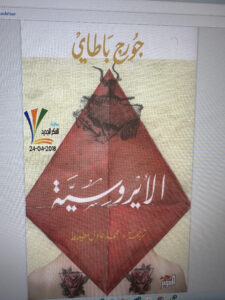
“L’erotisme” ” “Erotism: Death and Sensuality” is a book of George Bataille (1897-1962), Part 1- 13 Chapters & Par 11- 7 Studies about the same subject; 304 pages, translated to Arabic by Mohamad A. MTIMET , where he discussed, among other topics, the three main components of it: the eroticism of the body-“L’erotism des corps”– the eroticism of the feelings; “l’erotism des coeurs”, and the eroticism sacred- “L’erotsim scare’ -“‘. Through the whole part of the first part of the book, and taking in consideration the evolution of the concept from before the neandertal periord-the homo sapiens- until the advent of Christianity and its moral codes, mainly the pure & the impure (al-Mukaddas & al-Mudannas). The excellent analysis of the three components of the evolution of Eroticism, from its first stages to the more complex layers of the later evolution, demonstrates the connection of violence, through ecstasy , with the tabu, from the beginning of mankind consciousness, which according to the author, was always a process of the compensation for the isolation of the being, the “etre”, and its permanent need to deeply connect with the other. Death, violence & sex, whether for reproductive reasons, or for enjoyments, do have the same mecanism and the same originality: to get rid of the solitude-“discontinue'”- by practising implicite violence in all its forms with the other. To better understand the books of Marquis de Sade, especially his posthumously published book “The 120 Days of Sodom” (1904), & Foucault well, one should read Georges B. book to see the great influence this writer have had on Foucault’s methodology and approach, especially in his book: Discipline and Punish: the birth of the prison.
It is impossible to reduce the philosophy of Pataille to mere a few paragraphs . This note is merely intended to provoke others to read this book, whether in French or Arabic. It worths reading, although choking the established moral codes & traditional disciplines at the time the book was written in 1957.